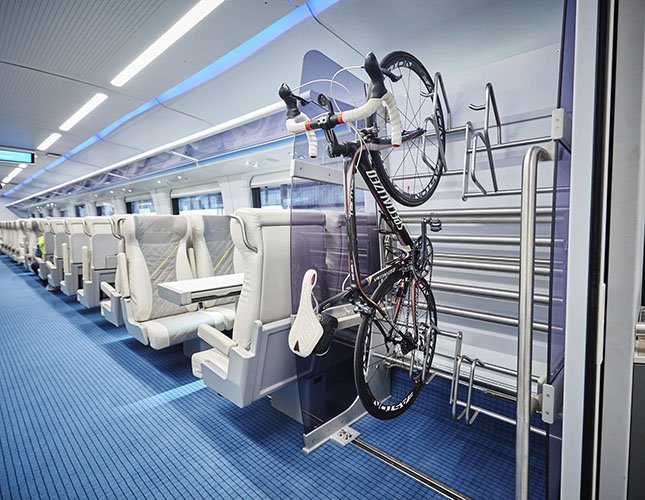To city dwellers used to the chaos and grime of New York’s Penn Station or Amtrak’s functional-but-modest stations across the country, stepping into Virgin MiamiCentral, the hub of south Florida’s new Brightline train, feels like entering the future. The Skidmore, Owings & Merrill-designed station is clean, easy to navigate and full of the kinds of amenities that matter to today’s traveler: fast WiFi, ample seating areas equipped with charging ports and a 40,000-square-foot food hall, Central Fare, to pick up a coffee or snack before your train departs.
That same experience continues after you board. Attendants roll trolleys offering drinks and snacks to passengers, seats are wide and comfortable and the onboard WiFi means you can work straight through the 30 minutes it takes to get to downtown Fort Lauderdale or the hour and 15 minutes it takes to get to downtown West Palm Beach from Miami.
“In the past decade, hospitality and retail have taken commodities and made them more experiential,” says Patrick Goddard, a former hotel industry exec who’s been president of Brightline since 2017. “You’ve got all these lifestyle and boutique hotels, but no one’s really taken the commodity of transportation and made it an experience.”
So that’s what Brightline is doing. An already $2 billion project nearly a decade in the making, Brightline is Fortress Investment Group cofounder Wes Edens’ bet that private passenger rail is the future of travel in the U.S., and that elevating the experience will create loyal users across the country. After a ride on the train, it starts to look like a smart bet. “Moving people in this way is much safer, much more comfortable and much more environmentally friendly,” Edens says. “It checks all the boxes.”
Moving people in this way is much safer, much more comfortable and much more environmentally friendly.

Edens and Fortress officially announced the Brightline project in 2012, but the history of train travel in Florida spans more than a century. In the late 1800s, Henry Flagler, an industrialist who’s considered the father of modern Florida, brought the railroad to what was a largely undeveloped state. Flagler’s Florida East Coast Industries (FECI) built railways from Jacksonville all the way to the Keys, and Flagler’s development of iconic properties such as the Breakers in Palm Beach and Miami’s Royal Palm Hotel helped turn south Florida into the resort-heavy community it is today.
Following a bankruptcy in the 1930s and labor disputes in the ’60s, FECI eventually stopped offering passenger train service and continued operating as a freight railway. In 2007, Fortress Investment Group bought FECI for $3.5 billion. Fortress formed a subsidiary, All Aboard Florida, to build and grow what would become its Brightline project, the first privately funded passenger train service to launch in the United States in more than a century.
“The way Wes explained it to me in my interview was, ‘Most people see a railroad and they see one business—freight. But it’s really three businesses: freight, passenger rail and real estate,’” Goddard says. “He had that vision.”
Getting the train from vision to operation involved what Goddard calls a herculean effort, and the Miami to West Palm Beach line is only part of the project: This year Brightline will break ground on phase two, a 170-mile route that will eventually connect Miami to the Orlando airport and Walt Disney World, with expansion beyond Orlando also planned. Slated to open in 2022, the train will connect Orlando’s 116 million annual tourists to the south Florida market and Miami’s cruise terminal, the busiest in the nation. But a big part of Edens’ bet is also that south Florida residents who travel to Orlando regularly (and vice versa) will see the value in paying for a train that will free them up to work or relax instead of sitting in south Florida’s horrific traffic—while also decreasing the environmental impact of their journey.
